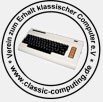Hello!
In late November I bought my second P2 unit, an Italian one. Before it arrived, I started thinking about spare parts and how expensive and difficult to find are some of its components. So I started a project to replace any faulty memory board on any P1/P2. I called it "Elephant", as elephants have good memory. The goal is to produce new boards with new and lesser ICs (all of them modern, of course). At this point I have two designs: a minimalistic 3-ic design which provides 48KB called "pygmy" and the complete, switch-configurable to 32, 48 and 64Kb with 10 ics called "mammooth".
Yesterday I finished soldering all wires on the "pygmy" prototype and tested it on the Italian unit. the full 48Kb memory was recognized and I could boot to CP/M with no problem at all. I am currently rewiring the prototype to turn it into an 8-ic 64Kb board.
The wire-wrapped board, front side.
The wire-wrapped board, back side.
The prototype board attached into the bus.
The prototype board, during testing. 4010-FFEF message returned after cold reset.
P2_Elephant.pdf
Here are the schematics for the "pygmy", which is the one tested. I'll post the next version once I have tested it.
Once the second and final version is tested, I'm planning to design the board itself and place an order to manufacture them. I hope helps to extend the life of these computers a few more years.
Thank you very much!

